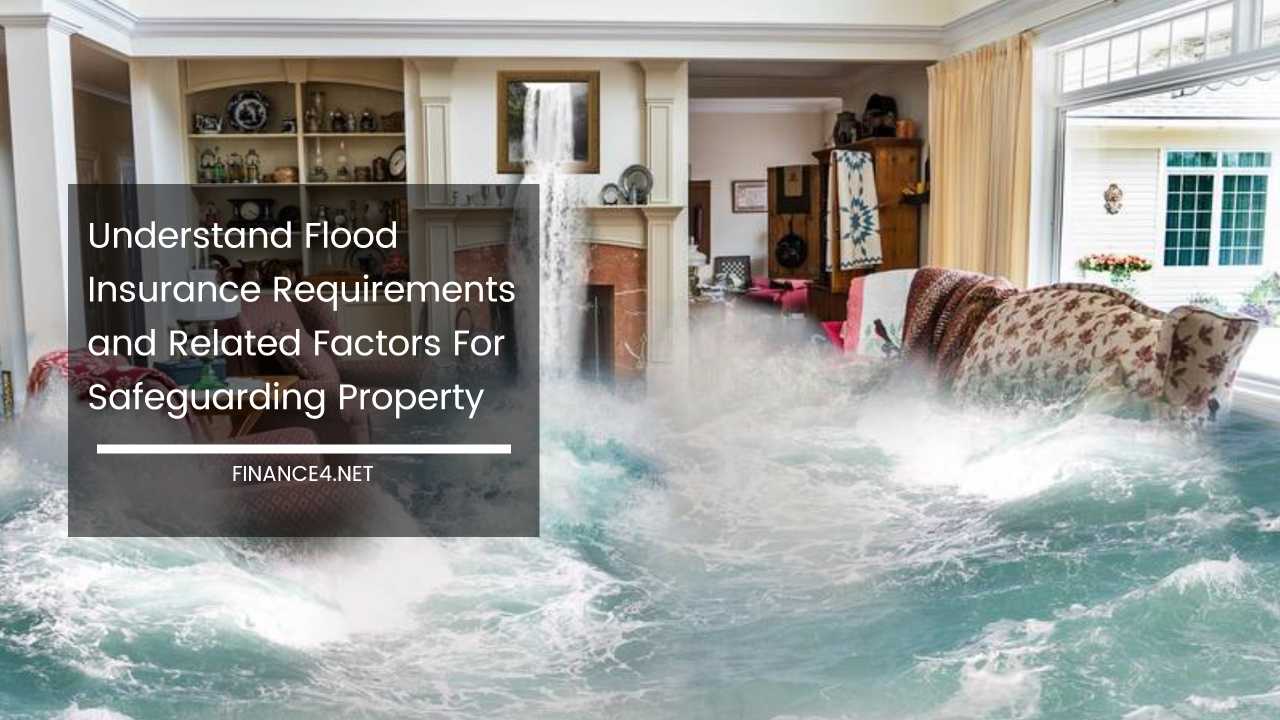Flood Insurance & Property Protection: A Homeowner’s Guide

Understanding Flood Insurance Requirements and Related Factors for Safeguarding Property
Every homeowner carries the weight of responsibility for safeguarding their property against the perils of natural disasters.
Even in regions perceived as immune to such threats, unpredictable weather patterns can unleash their fury, leaving a trail of destruction in their wake.
Severe storms and floods are particularly devastating, and without proper insurance coverage, the financial burden of repairs or rebuilding can be crippling.
The Growing Threat of Floods and the Evolving Landscape of Flood Insurance
Coastal regions have historically borne the brunt of powerful storms, flooding events, and widespread natural disasters.
However, climate change presents a growing threat, altering weather patterns and introducing unprecedented flood risks to areas traditionally known for calmer conditions.
The unpredictable nature of these events and the devastation caused by recent natural disasters have prompted the U.S. federal government to re-evaluate existing disaster management programs.
One major area of focus is the National Flood Insurance Program (NFIP) and the Federal Emergency Management Agency’s (FEMA) flood maps. These updates are crucial for homeowners and potential buyers, particularly in flood-prone areas like Florida.
Navigating the Maze of Changes: FEMA Flood Maps and NIFP Regulations
FEMA recently conducted extensive public discussions regarding changes to the NIFIP, largely driven by the impact of major coastal storms on communities and property.
A key component of these changes involves revisions to flood zone designations. Previously FEMA-compliant homes in certain areas may no longer be considered so under the new maps. Consequently, these properties will lose access to the reduced premiums associated with FEMA compliance.
Understanding Flood Insurance Requirements for Different Property Types
It’s critical for residents in high-hazard flood zones, both current homeowners and potential buyers, to understand the revised flood insurance requirements.
The phase-out of insurance subsidies will affect not only primary residences, but also secondary homes, commercial establishments within Special Flood Hazard Zones (SFHZ), and properties with a history of frequent flooding.
Impact of the Subsidy Phase-Out and Strategies for Managing Costs
There is a temporary grace period for homeowners with primary residences in SFHZs. They can continue benefiting from subsidized premiums until they sell the property, let their existing policy lapse, or choose to buy a new policy altogether.
However, this benefit will expire next year, and most homeowners will face significant increases in flood insurance premiums, potentially rising by 20% annually according to FEMA estimates.
To manage these potential cost increases, several strategies can be considered:
- Shop around: Don’t simply renew with your current provider. Explore quotes from different insurance companies, including private insurers who may offer flood insurance in certain areas alongside the NFIP.
- Elevation: Depending on the specific flood zone, FEMA regulations may require homeowners to elevate their properties. While this represents an initial investment, it can significantly reduce flood risks and potentially lead to lower insurance premiums in the long run.
Beyond Flood Insurance: A Multifaceted Approach to Flood Mitigation
While flood insurance is a vital tool for financial protection, it’s just one piece of the puzzle. Homeowners in flood-prone areas should consider a comprehensive approach to flood risk mitigation. Here are some additional strategies to explore:
- Floodproofing measures: Implementing floodproofing measures like elevating utilities, installing flood doors and vents, and waterproofing basements can minimize potential damage during flood events.
- Landscaping for Drainage: Strategic landscaping practices that promote proper drainage can help divert floodwaters away from the property. Consider creating swales or rain gardens to channel water runoff effectively.
- Building Materials: Choosing flood-resistant building materials for repairs or renovations can enhance the property’s ability to withstand flood damage.
- Community involvement: Staying informed about local flood warning systems and evacuation plans is crucial. Additionally, participating in community-wide flood mitigation initiatives, such as levee maintenance or floodplain restoration projects, can benefit everyone.
Financial Assistance Programs:
For some homeowners, particularly those in low- to moderate-income brackets, the rising costs of flood insurance may pose a significant challenge. Fortunately, several financial assistance programs can help:
- FEMA Hazard Mitigation Grant Program (HMGP): This program provides funding to state and local governments for hazard mitigation projects, which can benefit homeowners indirectly by reducing overall flood risk in a particular area.
- Community Development Block Grant (CDBG) Disaster Recovery: This program can be used by local communities to assist homeowners with repairs or flood mitigation measures following a declared disaster.
- Low-Income Housing Tax Credit (LIHTC): While not specifically focused on flood mitigation, LIHTC programs can help income-eligible homeowners finance renovations that include floodproofing measures.
By understanding the revised flood insurance requirements and exploring a variety of flood mitigation strategies, homeowners and potential buyers in flood-prone areas can make informed decisions. A proactive approach that combines appropriate insurance coverage with risk reduction measures can significantly improve property protection and financial security in the face of potential flooding events.
The Role of Technology in Flood Risk Management
Technology is playing an increasingly important role in flood risk management. Here are some ways technology can be leveraged:
- Flood Monitoring Systems: Real-time flood monitoring systems can provide early warnings to residents, allowing them to take preventative measures and evacuate if necessary. These systems often utilize a network of sensors that track water levels in rivers and streams, as well as rainfall data.
- Flood Modeling and Mapping Tools: Advanced flood modeling tools can help communities identify areas at high risk of flooding. These tools can be used to create more accurate flood maps and inform development decisions.
- Property-Specific Flood Risk Assessments: Technology can be used to generate property-specific flood risk assessments. These assessments can consider factors such as elevation, proximity to waterways, and historical flooding data to provide homeowners with a more precise understanding of their flood risk.
Investing in Community Resilience
While individual homeowners can take steps to mitigate flood risks on their properties, community-wide initiatives are essential for building long-term resilience. Here are some key aspects to consider:
- Floodplain Management: Implementing floodplain management strategies, such as restrictions on development in high-risk areas and the acquisition and preservation of natural floodplains, can help reduce flood risks for the entire community.
- Infrastructure Improvements: Upgrading drainage systems, elevating critical infrastructure like roads and power grids, and constructing levees or seawalls can significantly improve a community’s ability to withstand flooding.
- Public Education and Awareness: Public education campaigns can raise awareness about flood risks, flood preparedness measures, and the importance of flood insurance.
The Future of Flood Insurance
The future of flood insurance remains a topic of debate. Here are some potential scenarios:
- Increased Public-Private Partnerships: There may be a move towards increased public-private partnerships in the flood insurance market, with private insurers playing a larger role alongside the NFIP.
- Risk-Based Premiums: The current system of subsidized premiums is likely to be further phased out, leading to a shift towards risk-based premiums that reflect the actual flood risk of a particular property.
- Alternative Flood Insurance Options: The development of alternative flood insurance options, such as parametric flood insurance, which pays out based on pre-determined flood parameters, may emerge as a viable option for some homeowners.
Final Thoughts
In conclusion, understanding flood insurance requirements and implementing flood mitigation strategies is crucial for homeowners in flood-prone areas.
By embracing a multi-faceted approach that combines technology, community-based initiatives, and potentially evolving flood insurance models, we can work towards a future where both individual properties and communities are better prepared to weather the storms, literally and figuratively.



